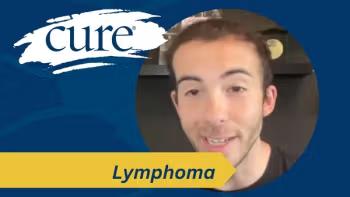
What Factors Play a Role in Determining Optimal First Line Treatment for Patients With CLL
There are three things that should be considered when deciding what is the optimal treatment in the first line setting for patients with chronic lymphocytic leukemia (CLL), according to Dr. Mazyar Shadman.
There are three things that should be considered when deciding what is the optimal treatment in the first line setting for patients with chronic lymphocytic leukemia (CLL), according to Dr. Mazyar Shadman.
In an interview with CURE®, Shadman, of Seattle Cancer Care Alliance and Fred Hutchinson Cancer Research Center, discussed some of the factors that go into determining what is the best treatment choice for patients with CLL in the upfront setting.
Transcription:
So, here's my approach, right? If I have a patient in the first line (with) previously untreated CLL, (the) number one question is do you see 17p deletion or p53 mutation? And then if there's any chance that chemotherapy would even be considered, then I would like to know what's the IGHV mutational status.
Now, let's talk about somebody who has an intact p53 gene, so no mutation and no deletion. Your options are either ibrutinib or acalabrutinib; I put them together because (they are) pretty similar drugs, or venetoclax-based therapy, right. Between ibrutinib and acalabrutinib, I think it's fair to say that acalabrutinib is just a better drug from the toxicity profile. Head-to-head studies are done in the relapsed setting and we'll learn more about it. But I think acalabrutinib overall, from the side effect profile, it's my preferred choice.
So, if I have to use a BTK inhibitor, that would be my choice. But really, the big question is, do you go with the BTK inhibitor? Or would you go with venetoclax and obinutuzumab as combo? I think the biggest factor is to talk to the patient and learn about their level of interest in having a time-limited therapy. So venetoclax, obinutuzumab is given for one year, and then you stop, and you know, you may have the option of having (the) patient off treatment for a long time. Now, it's not given for everybody, right, you may stop and a month later they have to go back on treatment. But looking at the data from the CLL14 study, if you achieve a good remission, which most of the patients achieve an MRD-negative remission, you can potentially go without treatment for a long time. So that's great. But the bulk of (the) discussion when I have a patient without 73 deletion or 53 mutation is, do you care if you're on medication forever if you don't have major side effects?
And if they say, ‘you know what, I don't care, I take medication for diabetes. And … I want something that I can start now. It's my friend's wedding a month from now I want to just be ready for it. I don't have time to go through the ramp up that you need for venetoclax’, then you know, they can go on a drug like acalabrutinib, especially if a younger patient who cares about other (things and is) very passionate about having a treatment for a year or so and then stop, then go with venetoclax. So that's the main discussion.
Then you also look at the side effects and what medical conditions patients have, right? If I have somebody in front of me with significant uncontrolled hypertension to begin with: if they have atrial fibrillation, if they have bleeding issues or (are) taking multiple blood thinners and antiplatelet drugs, then maybe a BTK inhibitor is not a great option for them. So, that would be a patient that I would consider venetoclax-based therapy.
On the other hand, if I have somebody with super abnormal kidney function, or they can't really, they don't have the means or interest of coming to clinic once a week for one or two months, depending on you know, whether or not to use the debulking strategy. And then maybe for those patients, you want to go so many factors. I would usually put them in three categories. Disease specific factors, and that goes with the molecular profile, and I'll get to the p53 abnormal patients. So, disease specific factors, (and) patient specific factors. So that's the age, that's the comorbidity, what side effects you (can) expect.
And then, I mean, I would add a social, I mean, really, if I had somebody who lives by himself. I have a patient who doesn't have a car and he can't drive. I mean, can I safely get him on venetoclax ramp up that requires long visits for weeks. I mean, I'm a big fan of venetoclax because I think time-limited therapy is important, but these are all factors that you need to discuss.
I kind of discussed the p53 normal situation, what if somebody has a mutated p53 or a deleted 17p chromosome. But for those patients, I think the best data is from BTK inhibitors for those patients. My approach is to go with ibrutinib or acalabrutinib. And then my second choice would be venetoclax-based therapy as those are high risk patients. And that's kind of one of our interests, my interest, in what we do here at the Hutch, is really having a program for high-risk CLL and that includes all these novel agents, some newer ones in clinical trials and using really cellular therapy, including CAR T-cell therapy and transplant for the selected high-risk CLL population.




